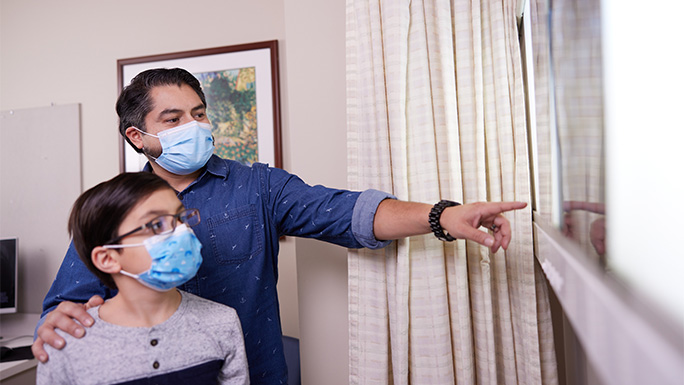Hand and Wrist Care for Children

Hand and wrist injuries in children can occur for a wide range of reasons, including sports injuries, overuse, sprains or be commonly associated with a genetic or congenital conditions. Our pediatric orthopaedic experts can accurately diagnose your child’s hand or wrist condition and offer personalize services to provide the most effective care. Our goal is to have your child pain free with restored strength, motion, dexterity, form and function.
Hand and Wrist Conditions We Treat
Our team of experts with walk your through what treatment options may apply to your child, and together, we will choose the therapy that provides the best long-term quality of life.
Cleft hand can lead to function and/or mobility issues that can significantly reduce your child’s range and use of their hand. Surgery can help provide more flexibility and usability of the hand, and our team will fully explain the options available for your child, and we will discuss all treatments with you before moving forward.
For less serious cases, there is little impairment in function and range of the finger, but if the condition is more severe bend, this could lead to lost functionality in the finger. Our experts will work with you and your family to decide what treatment(s) may be recommended, including physical therapy, occupation therapy, splinting or corrective surgery.
Hand abnormalities, such as macrodactyly, polydactyly and syndactyly, are a range of conditions that can impact the use hands and/or fingers:
- Macrodactyly is when one finger is much larger than all the other fingers
- Polydactyly occurs when there is an extra finger
- Syndactyly appears when one or more fingers are abnormally connected
With hand deformities, the severity of the condition will determine what treatment(s) may be needed to provide the optimal usability of his/her hand(s) and the best quality of life for your child. Our orthopaedic experts with work with you to decide what treatment option(s) would help your child the most.
Madelung deformity can occur in one or both arms and is not usually diagnosed until adolescence. As your child grows, he/she might experience loss of motion, pain in their arm/wrist, or have decreased wrist flexibility. For children diagnosed with Madelung deformity, surgery can address the abnormality to prevent the condition from worsening and provide more functionality.
Comer Children’s orthopaedists will help your child with stretching the bones to increase flexibility and mobility, or we will recommend splits to help realign the bones. If necessary, we can also perform surgery that will improve your child’s hand mobility and correct the bend in his/her radial and/or ulnar.
Surgery can be used to separate fused bones and put them in their proper positions within the arm.
Our pediatric orthopaedic team takes a personalized approached to care with each child we treat, and if your child has thumb hypoplasia, we will create an individualized treatment plan based on what will give your child the best long-term success.
